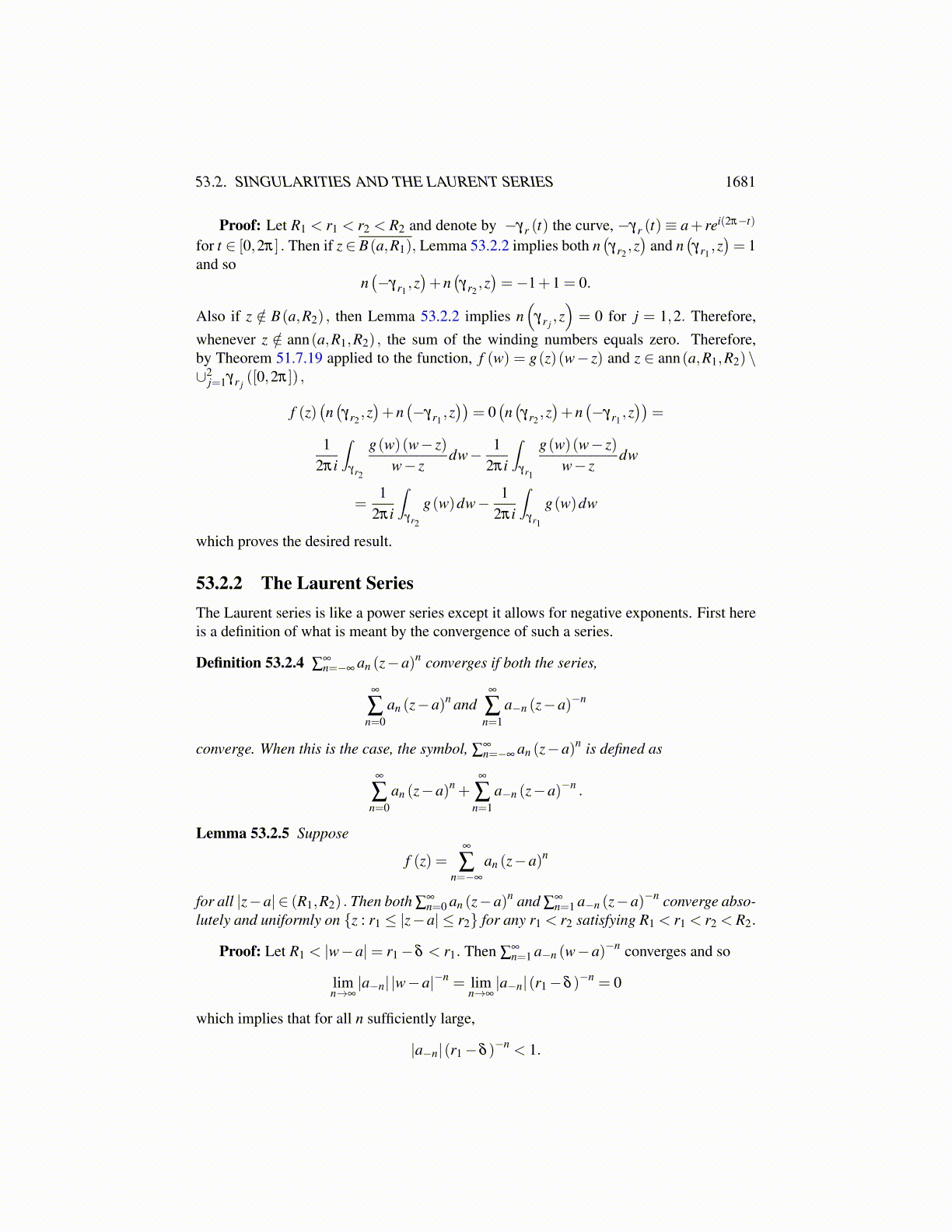
53.2. SINGULARITIES AND THE LAURENT SERIES 1681
and so z ∈ K. Thus all zeros of g(z)+ λ ( f (z)−g(z)) are contained in K. By Theorem51.7.25 on Page 1646 there exists a cycle, {γk}
nk=1 such that
∪nk=1γ
∗k ⊆Ω\K,
n
∑k=1
n(γk,z) = 1
for every z ∈ K and ∑nk=1 n(γk,z) = 0 for all z /∈Ω. Then by Theorem 53.1.2,
n
∑k=1
12πi
∫γk
λ ( f ′ (z)−g′ (z))+g′ (z)λ ( f (z)−g(z))+g(z)
dz =p
∑j=1
m j
where m j is the order of the jth zero of λ ( f −g)+ g in K, hence in Ω. The left side iscontinuous as a function of λ and so the number of zeros of g corresponding to λ = 0equals the number of zeros of f corresponding to λ = 1. This proves the corollary.
53.2 Singularities And The Laurent Series53.2.1 What Is An Annulus?In general, when you consider singularities, isolated or not, the fundamental tool is theLaurent series. This series is important for many other reasons also. In particular, it isfundamental to the spectral theory of various operators in functional analysis and is oneway to obtain relationships between algebraic and analytical conditions essential in variousconvergence theorems. A Laurent series lives on an annulus. In all this f has values in Xwhere X is a complex Banach space. If you like, let X = C.
Definition 53.2.1 Define ann(a,R1,R2)≡ {z : R1 < |z−a|< R2} .
Thus ann(a,0,R) would denote the punctured ball, B(a,R)\{0} and when R1 > 0, theannulus looks like the following.
a
The annulus is the stuff between the two circles.Here is an important lemma which is concerned with the situation described in the
following picture.
az
az